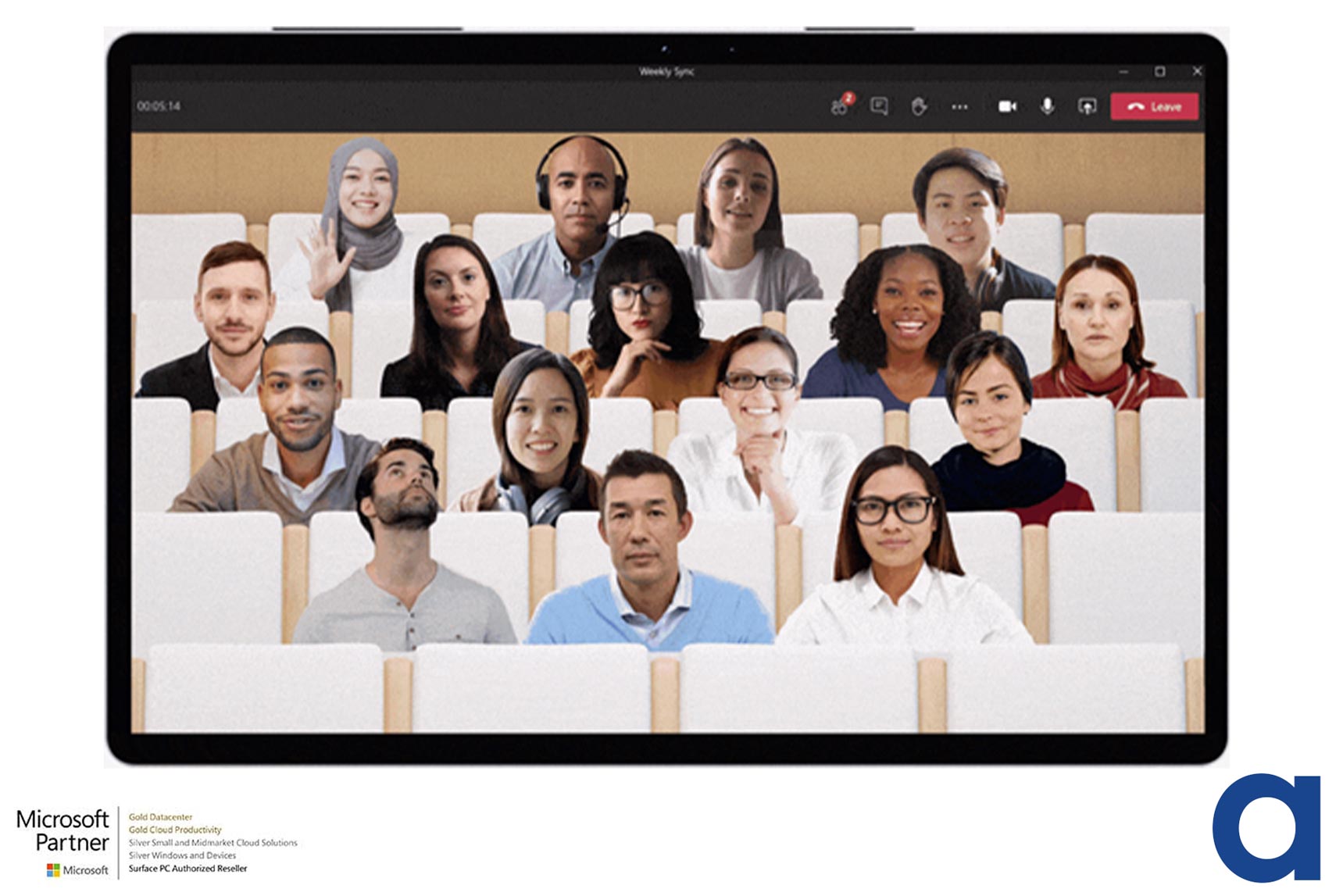
29 Sep Taking the Teams meeting room experience to the next level
Over the past few months, lecturers and their students have been getting steadily more friendly with Microsoft Teams in a way that few thought would be necessary. Lockdown and subsequent social distancing guidelines have made in-person teaching impossible – so universities have had to adapt. But during this period, many have taken to Teams far more readily and enthusiastically than they’d anticipated. In Teams, they discovered a dynamic, user-friendly software that was easy to use and encourages collaboration.
For teachers looking to enable efficient and productive remote learning, there’s plenty to get excited about in Microsoft Teams. And if you’re new to Microsoft Teams, there’s a good chance you’re missing an opportunity to really take your teaching to the next level. In this blog, we discuss some features of Microsoft Teams you might not have considered.
1. Keeping the chat going
Many think of Teams as simply a platform for efficiently setting up meetings. But it’s much more than that, and by making use of Teams and Channels for your classes, you can continue the discussion long past the lesson. Using Teams Channels is a great way of encouraging students to collaborate, share thoughts and ask each other for help between lessons. With this feature, you can create a more three-dimensional learning experience that supports and encourages people to learn more after the lesson is complete.
2. Together mode
Recently unveiled by Microsoft, Together mode is an exciting new feature that reimagines the way we communicate remotely. It removes people’s individual backgrounds and places them on a single shared background. The idea is to help bring people closer, creating a shared sense of togetherness even when they’re separated by geography. And conveniently enough, the shared background looks just like a lecture theatre, so you’ll be able to easily recreate the experience of learning together through Microsoft Teams.
Contact us today
3. Recording and transcribing lessons
The ability to easily record meetings and lessons is a popular feature of Microsoft Teams. More recently however, the ability to generate automatic transcriptions has been added to this list. Together, these features provide a richer learning experience for students, allowing students’ individual study time to become more efficient, detailed and productive. They also help students with special accessibility needs feel better supported.
4. Hand raising feature
The time lag in large remote meetings can often make it difficult for everybody to participate, since conversation doesn’t flow naturally. Without body language, the visual signals that people rely on to bounce conversations back and forth are missing. That means many participants often don’t speak at all, not wanting to interrupt the flow of the lesson. But with the hand raising feature, you encourage students to raise their hand when they have a point or question. This means students can feel more confident contributing, knowing their questions or points won’t be a source of disruption for the lesson.
5. Microsoft Whiteboard
The Microsoft Whiteboard is an Microsoft app that can be easily integrated with Microsoft Teams to improve the lesson experience. As the name would suggest, it’s a free-form digital canvas that allows people to easily annotate, create notes and share ideas on a shared screen. With Teams, this can be done through a remote meeting, replicating the experience of learning around a shared whiteboard in the classroom or lecture theatre.
6. Chat bubbles
Chat bubbles, another new Teams feature, is designed to create a more integrated and focused experience during remote calls. It allows messages posted in the meeting chat to be brought on screen during the meeting, without having to click onto the chat window. This can encourage discussion, elaboration without detracting attention from the main focus of the discussion.
Making your remote lessons work long term
Teachers and their students across the world are expecting a prolonged period of hybrid learning, with some people attending the lecture theatre in person and others joining remotely. For that reason, it’s important to make sure that you’re not just simply enabling remote learning – it’s vital to make the learning experience as three-dimensional and effective as possible.
Taking advantage of the features we discussed in this blog is an important first step in that process and will certainly help create a better learning experience for your students. But when creating a hybrid environment, including both remote and in-person learners, it’s important to make sure you have the right hardware. And it’s essential this hardware works with Microsoft Teams. That’s exactly what the new Microsoft Surface Hub 2S offers.
A hub for hybrid learning
The flagship product of the Microsoft Surface family is designed as an all in one interactive whiteboard and videoconferencing platform that brings both in-person and remote participants together into one shared screen. Complete with crystal clear speakers and a 4K ultra-high definition resolution camera, you can ensure that everybody in your lecture theatre can be easily seen and heard by everybody at home, no matter where they’re sitting. The Surface Hub 2S works seamlessly together with Microsoft Teams to create a genuinely interactive and inclusive hybrid learning experience.

If you want to find out more about using Teams for the learning environment, or getting the new Microsoft Surface Hub 2S, check out our eBook ‘Building tomorrow’s lecture theatre’. Alternatively, get in touch with our team to chat with us directly.


